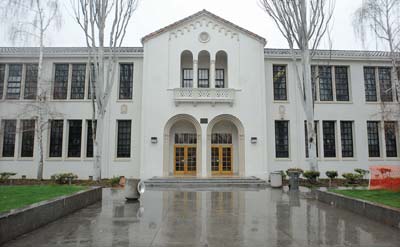The San Benito County Office of Education has been giving the San Benito High School District its normal percentage of impact fees charged at a new and higher rate since July despite the fact that the district did not justify using these rates until last week.
The State Allocation Board approved higher impact fee rates in January 2014, but the San Benito High School District shouldn’t have received the fees at the higher rates until 60 days from last week’s board meeting, which will be July 10.
Developers pay school facility fees or “impact fees” on new construction to help school districts pay for facilities needed to meet growing populations.
The high school district shares a percentage of the fees with the elementary school districts in its jurisdiction and at least one of those —the Hollister School District—has been benefiting from the new rates since May 25, 2014.
The County Office of Education found that the San Benito High School District should have received its allocated percentage of the prior impact fee rate of $3.20 and the difference between this rate and the new one should have been internally allocated back to the Hollister School District, explained Brandi Smith, the county’s new assistant superintendent of business services in an email to the Free Lance. This misallocation of funds has been occurring since July 2014, she wrote.
“I will be meeting with the CBOs (chief business officers) this afternoon to discuss how the correction of approximately $6K will be processed,” Smith wrote.
John Perales, the superintendent for San Benito High School, said his district was not at fault.
“We didn’t do anything wrong,” he said. “We did the study that’s required. We passed the resolution to obviously raise our impact fees to the level that the Hollister (School) District has. And unbeknownst to us—the county has been collecting fees at the rate that Hollister School District was collecting, which was higher than ours.”
The State Allocation Board adjusts the maximum rates of the developer fees in even years, which prompted the Hollister School District to fund an impact fees study so it could justify receiving fees at the highest possible rate, explained Gary McIntire, the superintendent of the Hollister School District. San Benito High School District did not take the same steps at the same time.
It’s not unusual for school districts sharing impact fees to approve rate changes at different times, but if one district approves the increase and the other doesn’t, developers immediately begin paying the higher rate and the school that justified the increase collects the difference, explained McIntire.
Typically, the head of the facilities department and the “certainly the superintendent” pay attention to the even years so the district can justify raising its impact fee rates, he said.
“I think what we had, really, is we had some recent turnover there,” McIntire said. “Just new faces and people retire and move on.”
San Benito High School Superintendent John Perales spoke with his district trustees and learned there is an “unspoken rule” that districts typically notify each other when they decide to go for higher rates.
“It’s kind of a gentleman’s agreement,” the superintendent said. Perales—who joined the district in April––was not sure if McIntire notified him that the elementary school district was pursuing higher rates.
“He may have done that but being so new and addressing so many things, I don’t recall,” Perales said.
In March 2014, the Hollister School District trustees voted unanimously to adopt an impact fees study that justified charging the increased rates. Those rates took effect 60 days later on May 25, 2014.
Meanwhile, the San Benito High School was going through leadership changes. Dr. William Barr was the interim superintendent of San Benito High School in March. By April—just one month before the Hollister School District’s new rates took effect—Perales became the high school district’s new superintendent.
Adding to the leadership changes, the high school district hired a new CBO, Roseanne Lascano, in January 2014, the same month that the State Allocation Board had adjusted the maximum impact fee rates.
By January 2015, the San Benito County Office of Education was also in the midst of leadership changes. Krystal Lomanto, the former principal of San Benito High School, became the county superintendent of schools that month. Brandi Smith was also hired to be the county assistant superintendent of business services.
“I think several factors have caused it,” Perales said. “I think turnover in personnel with my superintendship here, with my director of finance; the turnover at the county office with the new superintendent there and the new CBO there; the lack of communication between districts has obviously not been the best.”
The topic of impact fees came up at the high school district’s board meeting last week after Lascano raised the issue in her efforts to get “all our ducks in a row,” explained Perales.
“When it came up, we said, ‘It’s a good thing. We need the money obviously because we’re growing and growing and growing and we’re going to have to house these children that move into these developments,’” Perales said.










